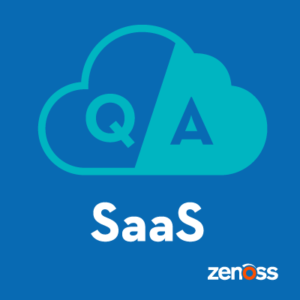
Nick, can you explain the difference between an on-premises installation of Zenoss Service Dynamics and Zenoss-as-a-Service? Why choose one or the other?
The biggest difference between the two is who is in charge of maintaining the hardware and software.
If you’re installing on-premises, you’re running a software product. You need to manage hardware resources, OS and application patching, security, recovery, redundancy, continuity.
If you’re deploying ZaaS, we’re responsible for the operations and you’re responsible for the business. We provide the resources, give a 99.9% availability SLA, and operate the system to assure great performance. We manage all of the operational responsibilities for you. We scale the environment as needed, ensure backups are taken and stored in a geographically distinct location, load MIBs, add users, install ZenPacks, and more.
Every time we interact with a customer’s installation we’re doing snapshots so we can redeploy into a different availability zone or region. We’re thinking about outcomes, and disaster recovery is part of that.
With ZaaS, customers can focus on their IT environment. No one knows it like they do, and they can focus on service impact, dashboards, analytics and really get the value out of the Zenoss platform. We partner with them to tune their installation to their needs, with triggers, notifications, thresholds, training, services, and support.
My idealized Zenoss has a dashboard with a bunch of green dots, and once something pops up on my dashboard it’s something that is actionable. Our goal is to enable customers to get to green as fast as possible.
You’re now running the largest production Zenoss installation in the world. What can you tell me about it?
Today we’re monitoring tens of thousands of customer resources on six continents. Every continent but Antarctica. Our deployment in the Amazon AWS cloud lets us centrally manage across a vast geographic area.
Last year we doubled the number of active customers, and are planning to triple this year. We’re signing up new-to-Zenoss customers all the time, as well as migrating existing on-premises customers.
How many people does it take to run ZaaS?
It’s actually a relatively small team, although we’re hiring now to support our growth plans. We’re growing staff slower than our customer growth.
We’ve focused on automating great deployment practices and as a result we’re running at a fraction of the staff-to-managed resource ratio that our best on-premises customers are running. It’s a similar ratio to what IaaS cloud providers run, although that’s a bit of apples and oranges. For customers that level of efficiency lets us provide an economical service.
Tell me more about the automation. Do customers see benefits in other ways, beyond cost?
What’s cool about operating ZaaS is we get key insights into the best deployment practices that benefit all our customers. A reality is that we’re standing up a lot of Zenoss instances, leveraging Amazon Cloud Formation templates, command line scripting, and automation currently using ruby, python, and SaltStack. With the automation it’s fast and secure to set up a new customer instance, all the way from the AWS servers to the customer premises data collectors and the OpenVPN tunnel.
We’re also able to use our visibility to proactively help customers. If an issue is discovered with one customer, we can quickly identify other customers potentially affected and work to schedule a solution before they are affected. We watch the infrastructure health of each deployment at the infrastructure level – CPU, memory, UI performance - but we also go further. We’re proactively working to ensure customers are getting value out of Zenoss and that the system is a trusted component in their IT operations.
Can you give me an example of proactive work?
When a customer signs up for monitoring of 1,000 devices, we check to see if they have successfully added those devices, if they’re being monitored, and if their staff is actually using the UI regularly. We’ll check to see if they’ve added all 1,000 devices and if their on-premises collector have the appropriate resources to keep up.
Nick, it sounds like you’re a big fan of ZaaS. Any closing thoughts?
We’re expecting the majority of our customers to move to ZaaS. The exceptions are people who need backend access, have a complex security infrastructure, or rely on sub-second monitoring.
The beauty of Zenoss is that we are built around the needs of the enterprise. We can fully support either an on-premises custom install or run the software for you as a service.
Want to deliver great service to your IT customers? We’d be happy to show you how Zenoss software can help!






